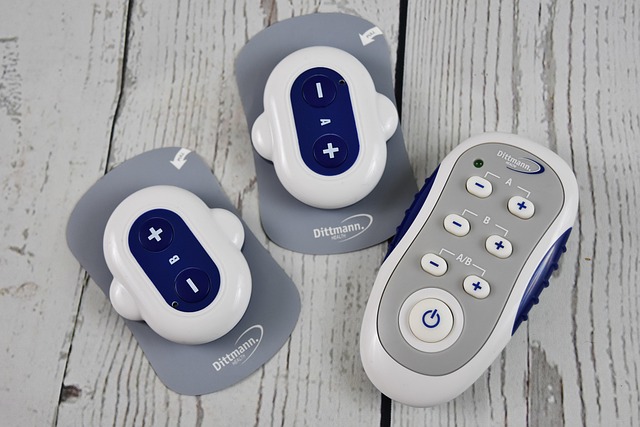Platelet-rich plasma (PRP) injections are a non-surgical treatment for regenerative medicine focusing on joint pain relief. Using autologous blood, PRP accelerates tissue repair and reduces inflammation in conditions like arthritis, tendonitis, and ligament sprains, potentially offering faster recovery times compared to traditional medications. Despite its promise, risks such as infection and adverse reactions exist; further studies are needed to fully understand long-term effects.
“Discover the potential of Platelet-Rich Plasma (PRP) injections as a cutting-edge approach to healing and pain management. This comprehensive guide delves into the innovative world of PRP therapy, exploring its mechanisms in alleviating joint pain and its role in the realm of regenerative medicine. By understanding how PRP works, you’ll gain insights into its benefits for faster recovery and reduced discomfort. We also weigh the potential risks, providing a balanced perspective on this promising treatment.”
Understanding Platelet-Rich Plasma (PRP) Injections
Platelet-rich plasma (PRP) injections have emerged as a promising approach in the field of regenerative medicine for joint pain. This innovative treatment harnesses the body’s natural healing mechanism by utilizing a patient’s own blood to accelerate tissue repair and reduce inflammation. During the procedure, a small amount of blood is drawn and spun in a centrifuge machine to isolate the platelet-rich component. This concentrated plasma is then injected back into the affected area, such as arthritic joints or injured ligaments.
PRP injections offer a minimally invasive way to stimulate the body’s healing process. Platelets are rich in growth factors, which play a crucial role in tissue regeneration and pain reduction. When injected, these growth factors encourage the body to produce new cells, boost collagen synthesis, and enhance blood flow, thereby promoting faster recovery and improved joint function. This method has gained popularity among healthcare professionals due to its potential benefits in managing chronic joint conditions without the need for extensive surgeries.
How PRP Works for Joint Pain Relief
Platelet-rich plasma (PRP) injections have emerged as a promising avenue in the field of regenerative medicine for joint pain relief. The process involves extracting a patient’s own blood and separating it into its various components, with a focus on platelets—small blood cells known for their role in clotting. PRP is rich in growth factors and bioactive proteins that stimulate healing processes within the body. When injected into painful joints, these growth factors promote tissue repair, reduce inflammation, and enhance the natural regenerative abilities of the affected area.
This innovative approach leverages the body’s inherent ability to heal itself by delivering concentrated platelets directly to sites of damage or pain. Unlike traditional medications that often mask symptoms without addressing the root cause, PRP therapy targets specific areas of joint distress, offering a more holistic solution for managing and potentially reversing degenerative conditions. Its non-invasive nature and use of autologous (a patient’s own) cells make it a safe and appealing option for those seeking alternative treatments for chronic or acute joint pain.
Benefits and Potential Risks of PRP Therapy
Platelet-rich plasma (PRP) therapy offers a promising approach to regenerative medicine for joint pain, leveraging the body’s own healing mechanisms. By injecting concentrated platelets into damaged areas, PRP accelerates tissue repair and reduces inflammation. This non-invasive procedure has gained popularity due to its potential to alleviate chronic pain, improve mobility, and speed up recovery times in conditions such as arthritis, tendonitis, and ligament sprains.
However, like any medical treatment, PRP therapy is not without risks. Potential complications include infection at the injection site, bleeding disorders, and an adverse reaction to the anesthetic used during the procedure. Additionally, while research supports its effectiveness for various conditions, more studies are needed to fully understand its long-term effects and optimal application in different scenarios. As with any medical intervention, individuals considering PRP therapy should consult a qualified healthcare provider to weigh the benefits against potential risks based on their specific health needs and circumstances.
Exploring PRP's Role in Regenerative Medicine
Platelet-rich plasma (PRP) has emerged as a promising tool in the field of regenerative medicine, offering potential benefits for various conditions, particularly those involving joint pain. This innovative therapy harnesses the body’s natural healing process by utilizing a patient’s own blood to stimulate tissue repair and regeneration.
In the context of regenerative medicine for joint pain, PRP injections have gained attention due to their ability to accelerate the healing process. The plasma, rich in growth factors, promotes tissue remodeling and supports the regrowth of damaged cartilage, tendons, and ligaments. By enhancing the body’s natural response, PRP has shown promising results in treating conditions like arthritis, tendonitis, and ligament sprains, providing patients with a potential alternative to surgical interventions for joint pain relief.
Platelet-rich plasma (PRP) injections have emerged as a promising avenue in regenerative medicine, offering targeted joint pain relief and accelerated healing. By harnessing the body’s own restorative capabilities, PRP therapy provides a minimally invasive approach to managing chronic joint conditions. While benefits are well documented, understanding potential risks is key. As research continues to evolve, PRP’s role in treating various musculoskeletal disorders looks set to become even more prominent, revolutionizing the way we address regenerative medicine for joint pain.
